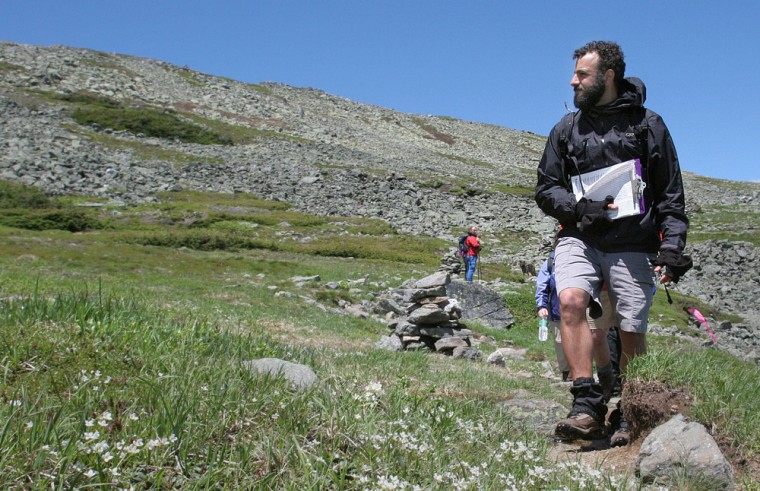Tourists flock to New Hampshire in the fall to see the trees turning red and gold.
But how carefully do they really look?
The Appalachian Mountain Club has launched a project that challenges hikers in the White Mountains to slow down and observe the changing colors of the trees and many other things, from plant buds to air pollution that might be obscuring the view. The "citizen science" effort is part of a larger AMC project tracking climate change and air quality. But it's also a good way to get visitors - including families - to study the environment while having fun.
"A lot of people come to the mountains; it's a unique environment, an alien landscape," said Doug Weihrauch, an alpine ecologist for the club. "People can learn a little bit more about what makes this place so special."
"This place" is the craggy, windy stretch near the summit of Mount Washington, elevation 6,288 feet. It's an ideal place for the AMC project, dubbed Mountain Watch, because what little grows there is more likely to be sensitive to changes in climate. And from the mountain it's easy to notice any pollution obscuring views that on a good day can extend as far as 90 miles.
Mountain Watch uses hikers as amateur field scientists to monitor plant life and the weather. Volunteers jot their observations on forms provided by the club or use special cards to record ozone levels. Club scientists add the information to a database that they hope will ultimately show long-term trends in climate and air quality.
In the fall, hikers are given maps and field guides and sent on a tree hunt to find specific birch, maple and ash trees tagged along family-friendly trails. They're then asked to record their observations about the tree's coloration and how many leaves are left.
But the idea is more than just getting hikers to collect data, said Georgia Murray, a club scientist who helped develop Mountain Watch. Stopping on a trail for five or 10 minutes to note one's surroundings is a simple way to engage people with their environment, she said.
The project isn't limited to Mount Washington or its alpine zone. Visitors to club centers around New Hampshire can record the changing foliage or note when plants like mountain avens, found at lower elevations as well as high, bloom in early summer. Club chapters also have been taking air-quality readings in other East Coast states.
Murray said she hopes gathering information will make people more aware of the threats facing mountain environments.
"I guess I come from the perspective that knowledge is going to get them to take that next step of wanting to do something about it," she said.
If you go:
MOUNTAIN WATCH: "Citizen Science" program in which hikers record their observations about air quality and changes in plant buds and fall color, sponsored by the Appalachian Mountain Club. Fall programs at AMC White Mountain locations at Highland Center in Crawford Notch, Pinkham Notch Visitor Center (Joe Dodge Lodge), Zealand Falls Hut and Lonesome Lake Hut. For details, http://www.outdoors.org/ or (603) 466-2727.
